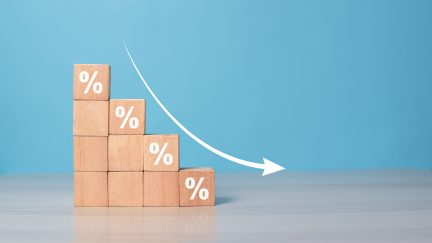Get more! Sign up for PLANSPONSOR newsletters.
TDFs Have Helped Many Ride Out Tough Markets
Fidelity recommends that individuals regularly monitor their mix of stocks, bonds and cash in their 401(k), but not make changes driven by short-term market volatility or other economic events.
A new 401(k)-focused survey report from Fidelity Investments shows solid gains for investors who have stayed in the markets consistently over the last 15 years, as well as a marked improvement in the way retirement investors use target-date funds (TDFs).
The analysis shows savers who have been in their company’s 401(k) plan for 15 years straight have an average balance of $331,200, as of the end of Q3. In 2001, these individuals had an average account balance of about $43,900, Fidelity notes, “which illustrates how a consistent focus on savings can deliver long-term benefits.”
Target-date funds have clearly helped keep participants on track over this time period, Fidelity says—especially since 2006 and thanks to the significant momentum gained by TDFs in the wake of the Pension Protection Act. Fidelity recommends that people regularly monitor their mix of stocks, bonds and cash in their 401(k), but not make changes driven by short-term market volatility or other economic events.
“Despite recent market volatility, the percentage of 401(k) savers who changed their asset allocation dropped to 7.4%, the lowest rate ever and down from 8.5% a year ago,” the report explains. “One reason for this trend is that more people are saving all of their 401(k) assets in a target-date fund. At the end of Q3, 44% of Fidelity’s 401(k) savers had all their 401(k) savings in a target-date fund, up from 41% a year ago.”
NEXT: Stressing a long-term approach
“Fidelity has always stressed that people should take a long-term approach to their retirement savings—it’s best to view this as a marathon, not a sprint,” says Jeanne Thompson, senior vice president, workplace investing, Fidelity Investments. “When the market gets shaky, it’s important to stay focused and to stick to the fundamentals of retirement savings. Have a plan, make regular contributions and ensure your asset allocation is aligned with your objectives. All of these steps will put you in the best possible position to reach your retirement goals.”
The Fidelity data suggests 401(k) savers in general are on an upward trend—again thanks in no small part to the ease and popularity of TDFs. The average 401(k) balance rose for the second straight quarter, up 2% from Q2 and 7% year-over-year. The average individual retirement account (IRA) balance increased 5% from Q2 and 6% year-over-year. In addition, Fidelity measures a dramatic increase in the number of people using health savings accounts (HSAs) to cover current and future qualified medical expenses. In the past year, the number of HSAs provided by Fidelity grew 43%, with an average HSA balance of $3,150.
These findings are based on quarterly data collected and shared by Fidelity looking at both the 401(k) and IRA markets. The analysis is based on 22,000 corporate defined contribution plans and 14.5 million participants, as of September 30, 2016. These figures include the adviser-sold market, but exclude the tax-exempt market.
More information is at www.fidelity.com.
You Might Also Like:
PLANSPONSOR Roadmap: Incorporating Annuities in DC Plans
Mutual Fund Expense Ratios Reach Historic Lows
New York City Bar Committee Urges Trump Administration to Strengthen Retirement Security
« Fiduciaries Failed to Follow Plan Document for ESOP Termination


